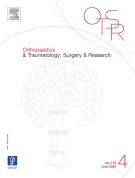Is there a cardiovascular risk associated with the use of fluoroquinolones for the treatment of osteoarticular infections? Analysis of a retrospective cohort of 817 patients from a surgical and infectious disease referral center (CRIOAC) - 12/04/25
 , Philippe-Alexandre Faure a, b, Barthelemy Lafon Desmurs b, c, Caroline Loiez b, d, Benjamin Valentin b, e, Henri Migaud a, b, Eric Senneville b, c
, Philippe-Alexandre Faure a, b, Barthelemy Lafon Desmurs b, c, Caroline Loiez b, d, Benjamin Valentin b, e, Henri Migaud a, b, Eric Senneville b, cAbstract |
Introduction |
Bone joint infection is a rare but serious complication, the treatment of which most often requires intervention combined with prolonged high-dose antibiotic therapy. Fluoroquinolones are among the standard antibiotics for the treatment of these infections, particularly in combination with rifampicin for staphylococcal infections and as monotherapy for Gram-negative bacilli infections. However, recent studies, confirmed by several meta-analyses, have highlighted an increased cardiovascular risk such as aortic aneurysm and mitro-aortic regurgitation occurring early following fluoroquinolone use, leading to recommendations for caution from health agencies. These meta-analyses are often based on limited series with numerous indication biases (variable treatment durations) and low doses. We therefore conducted a single-center, single-prescriber, real-life study of a continuous series of osteo-articular infections. The objectives were to determine the rate of cardiovascular events (aortic aneurysm, mitro-aortic regurgitation) at 60 days, the mortality rate at 60 days, and at the final follow-up.
Hypothesis |
Our hypothesis was that despite long-term, high-dose treatments, there was no increased cardiovascular risk in patients treated for osteo-articular infections with fluoroquinolones.
Materials and methods |
Between 2017 and 2019, 817 patients were treated at the CRIOAC (Referral Center for Complex Osteo-Articular Infections) Lille-Tourcoing (332/817 patients received treatment with fluoroquinolones). This retrospective cohort study assessed the onset or worsening of cardiovascular events (such as aortic aneurysms and mitro-aortic regurgitation) and death at 2 months using a propensity score.
Results |
After propensity score weighting, there was no significant difference in the risk of aortic aneurysm and mitro-aortic regurgitation at 60 days (Odds ratio (OR) 0.921 [0.317; 2.673], p = 0.879) or in the risk of death at 60 days (OR 1.252 [0.502; 3.118]; p = 0.630). There was also no significant difference in the risk of death at last follow-up after propensity score weighting (OR 1.011 [0.646; 1.582], p = 0.962).
Discussion |
The results of this study suggest that the use of fluoroquinolones in patients treated for osteoarticular infections does not pose a significant increased risk of aortic aneurysm, mitro-aortic regurgitation, or death within two months. We believe it is reasonable to continue prescribing fluoroquinolones for osteoarticular infections while maintaining surveillance for these events.
Level of evidence |
III; case-control study with propensity score.
Le texte complet de cet article est disponible en PDF.Keywords : Case-matched, Propension score, Prothesis joint infection, Fluoroquinolones, Osteoarticular infection
Plan
Bienvenue sur EM-consulte, la référence des professionnels de santé.
L’accès au texte intégral de cet article nécessite un abonnement.
Déjà abonné à cette revue ?

